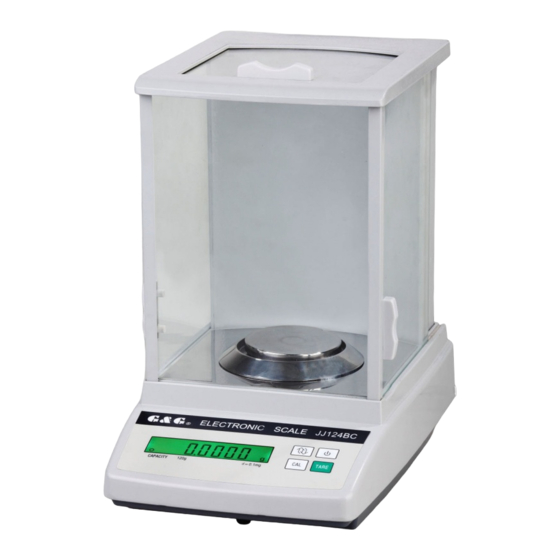
Table of Contents
Advertisement
Operating Instruction
Version 1.1
09/2019
EN
Laboratory / Analytical balances JJ-BC
To ensure the correct application of the scales of this series,
please read these instructions carefully and properly
preserved for future reference.
N o v e s i a s t r . 3 1
4 1 5 6 4 K a a r s t
G e r m a n y
T e l . : + 4 9 / ( 0 ) 2 1 3 1 / 1 3 3 5 6 0 5
F a x . : + 4 9 / ( 0 ) 2 1 3 1 / 1 3 3 5 6 0 7
Advertisement
Table of Contents














Need help?
Do you have a question about the JJ-BC Series and is the answer not in the manual?
Questions and answers